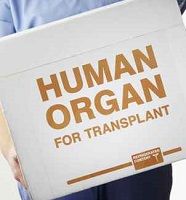Article
Ending Geographic Disparities in Organ Transplantation
Author(s):
Waiting lists for donor organs are shorter in some parts of the US, creating a geographic disparity that The US Department of Health and Human Services would like to eliminate. There are currently 58 Donor Service Areas in 11 US regions and donor organs go first to patients within each one. That has created a system where transplant patients often travel to regions where the waits are shorter, a hardship for them and a barrier to poor patients.

Waiting lists for donor organs are shorter in some parts of the US, creating a geographic disparity that The US Department of Health and Human Services would like to eliminate.
There are currently 58 Donor Service Areas in 11 US regions and donor organs go first to patients within each one. That has created a system where transplant patients often travel to regions where the waits are shorter, a hardship for them and a barrier to poor patients.
Also figuring into the system is the fact that the sicker a patient becomes while waiting, the higher he or she moves up on the waiting list. The unintended consequence is that in regions with the longest waiting lists, patients’ odds of survival go down because they are sicker. In places where lists a shorter, patients often get donor organs while they are relatively healthy.
Reporting in the New England Journal of Medicine, Daniela Lamas, MD and Lisa Rosenbaum report on the efforts of the Liver and Intestinal Organ Transplantation Committee of the United Network for Organ Sharing (UNOS) to come up with a new map of UNOS regions. They met Sept. 16 in Chicago, and had a heated debate as reported on HCPlive.com.
“In Boston, physicians see their patients dying on the waiting list,” they wrote, “In Kansas, physicians often get to tell patients that an organ has arrived.” So pressure to reduce the number of regions to 4 or 8 is strongest in states with long waiting lists.
There are disadvantages to that change, the authors note. It would mean transporting organs longer distances, and could mean that some major centers would be doing fewer surgeries. At the University of Kansas Hospital Center for Transplantation, for instance, doctors have predicted that the transplantation practice would lose about 30% to 40% of its current volume.
The authors conclude that while it is a difficult problem to solve, there is progress in the fact that change is being formally discussed.
Others are hopeful that new organ perfusion devices will help solve the problem by keeping donor organs “alive” for longer periods.





